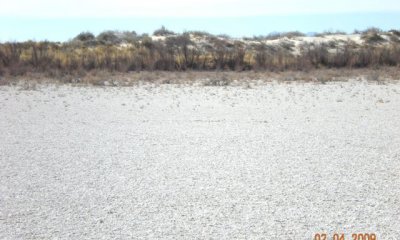
Gyp Playa, Desert Shrub
Scenario model
Current ecosystem state
Select a state
Management practices/drivers
Select a transition or restoration pathway
- Transition T1A More details
- Restoration pathway R2A More details
- Transition T2A More details
- Restoration pathway R3A More details
-
No transition or restoration pathway between the selected states has been described
Target ecosystem state
Select a state
State 1
Playa Edge






Description
Communities on the edges of the playa tend to occur as bands of vegetation that occupy specific zones. However, each community typically intergrades with those adjoining at the ecotones.
Submodel
Description
This state is characterized by the presence of saltcedar. The inland saltgrass community and associated ecotones seem to be most susceptible to the invasion of saltcedar. The depth to the water table of the iodinebush vegetation zone may be too shallow to allow establishment of saltcedar seedlings. Inland saltgrass is dominant.
Submodel
Description
Saltcedar may dominate, typically in relatively narrow bands that ring a portion of the playa.
Submodel
Mechanism
Introduction of seed is the primary factor in the cause of this transition. Due to the presence of a shallow water table, soils on this site usually contain adequate soil moisture necessary for seed germination. Locations adjacent to areas with an abundant seed source may also increase the likelihood of this transition.
Mechanism
Brush management by chemical, mechanical or a combination can be used to remove saltcedar and return to the Grass/Shrub state. Manually removing and treating the cut stumps with“Garlon” is effective in the treatment of saltcedar. Additionally, spraying with “Arsenal” also has exhibited high kill rates. Regardless of the means of treatment, monitoring and follow-up will be necessary to insure missed plants and regrowth is addressed.
Mechanism
Dense stands of saltcedar can occupy areas where the depth to water table is within the 5-20 ft. range. Additionally once established saltcedar is a fierce competitor for resources with its extensive root system, high seed production, and high salinity tolerance.
Mechanism
Saltcedar must first be removed mechanically, chemically, or by a combination of these techniques. Monitoring and follow-up treatment is necessary to address plants that were missed during initial treatment and the subsequent re-growth of treated trees.
Seeding with native species (such as inland saltgrass) which are capable of withstanding high salinity levels may help to compete against new saltcedar seedlings. Since water table depth is the key factor in the domination by saltcedar, treatment methods that cause a change in hydrology may be beneficial.
Model keys
Briefcase
Add ecological sites and Major Land Resource Areas to your briefcase by clicking on the briefcase (![]() ) icon wherever it occurs. Drag and drop items to reorder. Cookies are used to store briefcase items between browsing sessions. Because of this, the number of items that can be added to your briefcase is limited, and briefcase items added on one device and browser cannot be accessed from another device or browser. Users who do not wish to place cookies on their devices should not use the briefcase tool. Briefcase cookies serve no other purpose than described here and are deleted whenever browsing history is cleared.
) icon wherever it occurs. Drag and drop items to reorder. Cookies are used to store briefcase items between browsing sessions. Because of this, the number of items that can be added to your briefcase is limited, and briefcase items added on one device and browser cannot be accessed from another device or browser. Users who do not wish to place cookies on their devices should not use the briefcase tool. Briefcase cookies serve no other purpose than described here and are deleted whenever browsing history is cleared.
Ecological sites
Major Land Resource Areas
The Ecosystem Dynamics Interpretive Tool is an information system framework developed by the USDA-ARS Jornada Experimental Range, USDA Natural Resources Conservation Service, and New Mexico State University.










